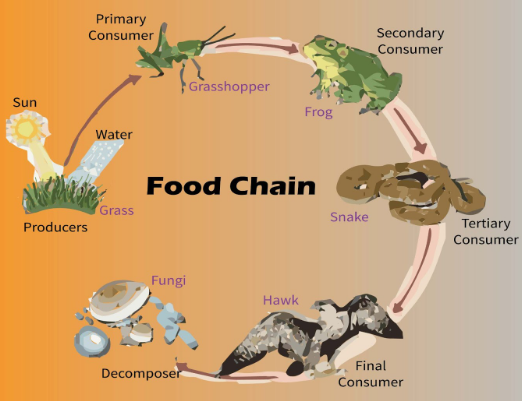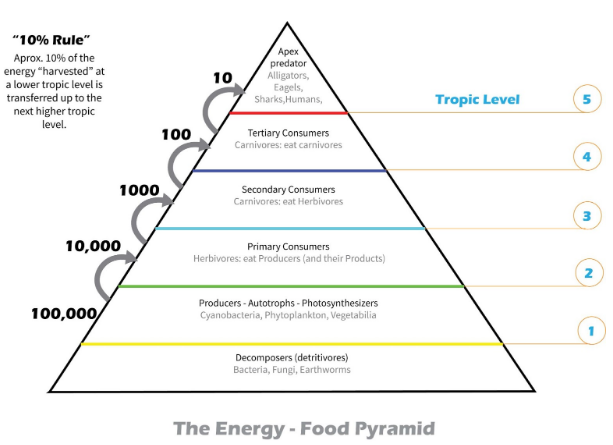
What is the difference between a food chain and an energy pyramid?
Answer
516.3k+ views
Hint: The sequential or graphical representation of the organism and the amount of energy produced or consumed or the organisms that eat the other organisms are easily studied through these representations.
Complete answer


Note:
When one of the species in a food chain no longer exists, for example, a species becomes extinct or a fierce animal takes over the food chain. Seldom, can lead to other animals in the food chain disappearing as well and the whole ecosystem may become imbalanced or even collapse. The ecological pyramids are helpful in studying the changes that are occurring in the environment by comparing them from the data of several years.
Complete answer
| Food chain | Energy pyramid |
| A food chain represents the flow of energy and matter in the form of food, from prey to predator. | A graphic representation of the amount of energy trapped per unit of time and area in different trophic levels of a food chain. |
| A food chain is a sequential order that shows the flow of energy from one organism to another. | The graphical representation of the organism shows their relationship at different trophic levels. |
| In a community, there are producers, consumers, and decomposers. | The ecological pyramids are of three types: pyramids of energy, biomass, and numbers. |
| The amount of energy consumed in the form of the food chain starts from the producers to the decomposers. | The amount of energy is passed from the producers to the decomposers. |
| Producers produce food with stored energy that other animals are able to consume while the consumer is an animal that gains energy by eating plants or animals. | In the pyramid of energy, only 10%-20% of the energy is available to the next trophic level. |
| When the different food chains are connected together then it will form a food web. | The energy decreases as the trophic levels increase, this is explained with the help of the second law of thermodynamics. |


Note:
When one of the species in a food chain no longer exists, for example, a species becomes extinct or a fierce animal takes over the food chain. Seldom, can lead to other animals in the food chain disappearing as well and the whole ecosystem may become imbalanced or even collapse. The ecological pyramids are helpful in studying the changes that are occurring in the environment by comparing them from the data of several years.
Recently Updated Pages
Two men on either side of the cliff 90m height observe class 10 maths CBSE

What happens to glucose which enters nephron along class 10 biology CBSE

Cutting of the Chinese melon means A The business and class 10 social science CBSE

Write a dialogue with at least ten utterances between class 10 english CBSE

Show an aquatic food chain using the following organisms class 10 biology CBSE

A circle is inscribed in an equilateral triangle and class 10 maths CBSE

Trending doubts
The shortest day of the year in India

Why is there a time difference of about 5 hours between class 10 social science CBSE

Write a letter to the principal requesting him to grant class 10 english CBSE

What is the median of the first 10 natural numbers class 10 maths CBSE

The Equation xxx + 2 is Satisfied when x is Equal to Class 10 Maths

State and prove converse of BPT Basic Proportionality class 10 maths CBSE




